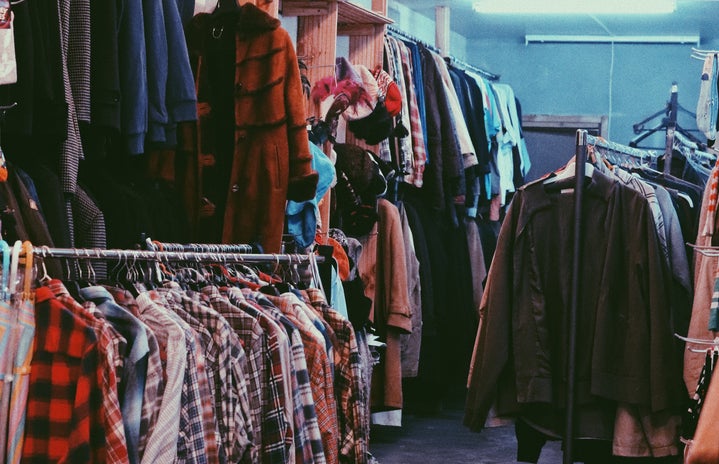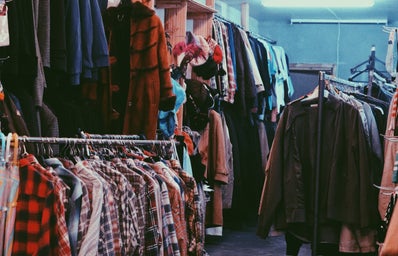Francisco Torres, a University of Cincinnati student and current president of UC’s Thrift Club, did not think one simple idea would become one of UC’s most popular clubs and become a key resource in promoting sustainability across Cincinnati.
A case study by Kadence International estimates that approximately 82% of Gen Z consider sustainability, climate change, and pollution to be the most pressing issues of the 21st century. 72% of Gen Z say they have already made steps to change their behavior to reduce their carbon footprint (Shaw). Statistics from Earth.org show the fashion industry is responsible for “about 10% of global carbon emissions – more than all international flights and maritime shipping combined” (Maiti, 2024). It’s evident that young students deeply care about the well-being of our planet, and fashion appears to be an increasing contributor to pollution. But what can the University of Cincinnati do about it?
Francisco and his friends knew that it was time for UC to start making a change—it was time to rally students who were eager to take a stand against fast fashion and create a meaningful impact on our planet.
UC Thrift is a University of Cincinnati club that aims to teach students about the power of thrifting and upcycling.
I talked with UC Thrift’s President, Francisco, and UC Thrift’s Social Media Manager, Zuzanna, to answer some of Her Campus’s burning questions.
We’ve all seen the “Shein Haul” TikToks—where influencers dump bags full of cheaply produced clothing from fashion sites like Shein, Temu, or Romwe. What happens to all those clothes when it’s time to get rid of them? Are they thrown out? Are they donated?
Living in a world where fast fashion is at its peak, it’s becoming evident that consumers are amassing mass amounts of shoddy-made clothing. These clothes either end up in the dump or donated where it will continue the same cycle: purchased, donated, purchased, trashed.
UC Thrift’s President, Francisco, says that the most important part of creating a sustainable closet is to “Reduce. Reuse. Recycle. In that order.” It begins by shopping intentionally—look for clothing that you know is durable and high-quality. Zuzanna, UC Thrift’s social media manager, explains that “the problem is the fashion cycle,” so much clothing is being produced without the ability to properly dispose of it.
Next time you shop, choose sustainable brands, care for your clothes by repairing any holes, hand washing delicate items, and hanging them to dry instead of using a dryer. Try creating a capsule wardrobe: you can read more about refreshing your wardrobe through Her Campus Cincinnati’s article Refreshing Your Closet: A Style Transformation. Try to upcycle or swap clothing pieces with friends and family. You can even bring clothing to UC Thrift where the club participates in frequent clothing swaps. Francisco adds, “When you donate to a big thrift store, 50% goes in the trash. So instead, why don’t you give it to us!”
Citations
Maiti, Rashmila, and Chin Leong. 2024. “Fast Fashion and Its Environmental Impact in 2024.” Earth.Org. https://earth.org/fast-fashions-detrimental-effect-on-the-environment/.
Shaw, Jodie. “Why Gen Z Values Sustainability: Tips for Marketing to the Eco-Conscious Generation.” Kadence, May 15, 2024. https://kadence.com/en-us/why-gen-z-values-sustainability-tips-for-marketing-to-the-eco-conscious-generation/#:~:text=The%20eco%2Dconscious%20generation,-Gen%20Z%2C%20born&text=As%20a%20result%2C%20Gen%20Z,their%20impact%20on%20the%20environment.


